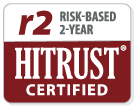Profiles in Healthcare – Leanna Hester, R.N., B.S.N., – VP, Advisory Services
Q: Why did you join Curation Health?
A: Value-based care (VBC) has been in the background of much of my work over the years. After working with health systems to implement electronic health record (EHR) systems and drive process improvement initiatives in IT and Operations, I know that adding value-based care to a care delivery model is no small feat.
Curation Health has created a product that can free up time for clinicians to focus on the needs of their patients which really caught my attention. I saw an opportunity with Curation Health to use my skills and background to help make VBC seamless to clinicians. The Curation platform incorporates key elements into clinical workflows that can and should influence the way we schedule, document and treat patients– I feel strongly that value-based care initiatives help us move toward a more patient-centered healthcare system. Curation is helping health systems to meet their VBC goals with a really low lift on clinicians, which is really exciting.
A: Before we talk about how to accelerate VBC adoption, we have to talk about clinician change management – especially when it comes to new technology, even a new EHR. What is the greatest process improvement change you have seen at work that contributes to EHR adoption and use?
A: Peer engagement and clinical champions prove time and time again to be a silver bullet. Building a structure early in a project to involve those engaged in clinical care and learn how to best communicate with them and their peers. Establishing processes, expectations and timelines that everyone understands keep the team accountable and builds trust.
Another key to success is recognizing the perspectives of all roles involved in patient care. Physicians are great resources, but no one knows more about workflow and processes than the people who work side by side with them every day.
Q: Do you think most hospitals/physician practices really know what it means to practice value-based care?
A: I think they are learning. There is a definite need and opportunity to educate caregivers and health system leaders about the benefits of value-based care. The more research we can accumulate and share highlighting the improved outcomes of patients treated in VBC settings, the more we will peak the interest of the practicing clinician.
Q: What do you think is most needed to increase adoption of VBC?
A: In my past experience working with EHRs, clinicians can often feel that new regulations and processes never stop. To get their attention, we need to make VBC part of the holistic vision of how an organization cares for patients. If VBC is seen as yet another priority, we run the risk it will be ignored.
The pandemic and increased patient volumes are stressing our caregivers more than ever and despite burnout, clinicians keep doing what is needed for patients. Some care models like telehealth advanced rapidly during the pandemic because it was clear that we needed new ways to reach our patients. I think this should teach us a lot about changing behavior: clinicians are evidence-based thinkers, and when we can prove the need and value in a new process, clinicians are more likely to consider and adopt it.
Q: What happens when you add additional clinical alerts to technology platforms?
A: This topic is one that I’ve had conversations about since I started work with EHRs about 15 years ago. The story is often the same: an implementation starts with very clear policies around the criteria for an alert.
As the implementation rolls on, rules and processes break down allowing alerts to be added for everything from diet orders to medication interactions. While these things and many in between are important, we lose perspective on the right time and method to address them and default to adding an alert. Value-based care is an important part of care delivery, but it shouldn’t add to the alert fatigue burden.
This is one of the best parts of the Curation platform – the key VBC insights integrate seamlessly into EHR workflows adding a source of information within the context of the visit. As a provider composes their note and adds diagnosis, patient specific VBC documentation insights are present for side by side review.
Q: How do we communicate to clinical teams the usefulness of the data we surface?
A: Repetition is key to making habits. It’s important to start introducing VBC concepts in small ways and gauge the audience’s familiarity and capacity first. Circumstances and environment can really determine how a clinician incorporates the information we are sharing with them. If we are adding detail to a patient encounter on a really busy day when they haven’t had a chance to review what we are doing and why ahead of time, a lot will likely be ignored. Curation is driving utilization by teeing up insights and sharing them at the point of care. It doesn’t get much better than that.
Q: Why is the Curation 3Cs approach unique in your opinion as a former nursing executive?
A: We have a tendency in healthcare to do our best in the moment and clean up any messes later. This is often a necessity, but it is also a source of countless hours of rework, cleanup and frustration within our healthcare organizations. The 3 Cs: Curate, Capture, Confirm, intervene at each step of the process setting clinicians up for success. A smart doctor once told me: if you make it easy enough, everyone will do it!
Curation has taken this to heart and is able to integrate into EHRs seamlessly, for example with the Epic App Orchard. We help clinicians to streamline documentation and impact VBC performance, all with a really low lift.
To read more in our Profiles in Healthcare series, visit our blog.

